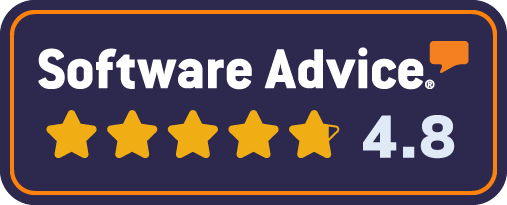Does your organization employ one or many Sales Development Representatives (SDR) to help with your lead qualification endeavors? If so, do you know how much it’s costing your organization?
The short version of the answer here is: too much.
Many companies (including multi-nationals such as Salesforce) have employed SDRs into their lead qualification strategy in recent years. A well-employed SDR team can be an invaluable asset for your organization. Like stated above, for some companies, it has radically changed the game for them.
But is it a strategy worthy of pursuit for your organization? Some organizations don’t have the resources like the “big guys” listed earlier. If this sounds like your organization – our reasonings point us to “no” and let’s show you why.
In this article, we’ll go over why your organization is paying too much for SDRs, why SDRs are ineffective for your sales & marketing strategies and how you can use other tools and strategies with your lead qualification endeavors that bring your organization a better ROI.
What is an SDR?
It’s important for us to first define what an SDR is before we dissect why and how it’s taking away from your lead qualification strategy. According to RingDNA, a Sales Development Representative is,
“a type of inside sales rep that solely focuses on outbound prospecting […] Unlike quota-carrying salespeople, SDRs don’t focus on closing business. Rather, SDRs focus on moving leads through the pipeline […] This enables closers to spend more time selling to qualified leads and unburdens sales executives from having to engage in prospecting.”
SDR Problem 1: No One Wants To Talk To Them
Like stated above, SDRs aren’t your traditional sales representatives. An SDR is responsible for qualifying the leads for the closers so it can be a seamless lay up from lead generated to a confirmed sale. An SDR is charged with “chasing down” a potential lead and warming them up for a close.
Today’s consumers don’t want that type of consumer experience. Today’s consumer isn’t looking to communicate necessarily the way an SDR is going to operate.
Today’s consumer operates differently:
- Today’s consumers research their potential purchase online whereas they used to ask friends and loved ones.
- Today’s consumers prefer text, Facebook Messenger and other internet data services over receiving a phone call, whereas they used to use a phone for all of their inquiries.
A potential customer wants a consumer experience catered to them. It’s important to consider their preferred means of communication. Do they prefer to talk over text? Do they use Facebook Messenger? Do they use email?
You get the idea.
The problem with an SDR is generally, they are employed to follow a “one-size-fits-all” script that entails driving phone calls in the hopes the potential customer picks up then to hammer out their call script in hopes they’ll offer interest and ultimately be handed over to the sales representative who can close the deal.
How do your customers want to be contacted? It’s important to have a “smart cadence” when attempting to contact and responding to your customers. What do we mean by “smart cadence?” Smart cadence is the ability to map out, from the first attempt at communication, what the best means of communication will be for the respective customer.
Think of smart cadence as a tailor-made communication experience for each individual customer. This isn’t something you get with the one-size-fits-all approach of an SDR script.
SDR Problem 2: They’re too expensive for your organization
Do you know how much the average SDR will cost an organization?
According to Payscale, the average SDR with 5-9 years of experience earns an average total compensation of $45,587 based on 118 salaries. Expand that number out to how many SDRs you need to fulfill your lead qualification strategy requirements and you’ll see very quickly how much money you’ll be spending on employing your SDR fleet.
SDRs, while they can be effective and help more seamlessly aid in connecting the bridge between sales and marketing, are often too expensive for an organization and they don’t cater precisely to the communication needs and desires of your future customers.
So what is your alternative?
Why you should outsource your lead qualification services
Instead of hiring a team of SDRs to help with your lead qualification strategy, we recommend outsourcing the service. There are many reasons why this is the best route for your organization and we’re going to lay out the best reasons for you now.
Unlimited time window
Unlike a full-time SDR, when you outsource your lead qualification services, you open your organization up to the ability to respond to and contact your potential leads 24/7/365.
Your internal SDRs will only be able to work their leads while they are on the clock. When you outsource the service, you will have the ability to reach your leads when it’s convenient for them.
Instant communication
As good as a human representative is, they are limited. Again, like stated above, your internal SDR can only respond to a lead when they are in the office. When you outsource the service, you open your organization up to being able to respond to your leads instantly. Research shows that when you respond to leads first, you are 3X more likely to convert the lead.
Save money
Hiring full-time SDRs is expensive.
Outsourcing your lead qualification strategy is cost-efficient.
For a fraction of the price, you can have both human conversation as well as automated technology working around the clock for you so you don’t miss out on another lead.
Bridge the “gap” between marketing and sales
Our research indicates that 55% of all leads are lost during the handoff between marketing and sales.
This is unacceptable.
Losing those leads is amounting to your organization losing money. With a dedicated outsourced lead qualification service, you can trust that your leads are going to be responded to instantly so they stay warm. Furthermore, your leads will be responded to 10 times over the first 5 days and continuously nurtured over the following 6 months so your marketing team can focus on what they do best and your sales team can focus on what they do best.
And then let the lead qualification service do what they do best – bridge the gap between the two.


